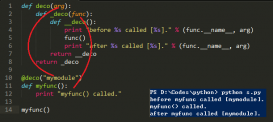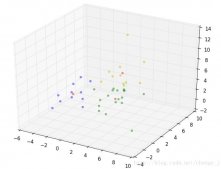本文实例讲述了python集合用法。分享给大家供大家参考。具体分析如下:
|
1
2
3
4
5
6
7
8
9
10
11
12
13
14
15
16
17
18
19
20
21
22
23
24
25
26
27
28
29
30
31
32
33
34
35
36
37
38
39
40
41
42
43
44
45
46
47
48
49
50
51
52
53
54
55
56
57
58
59
60
|
# sets are unordered collections of unique hashable elements# Python23 tested vegaseat 09mar2005# Python v2.4 has sets built inimport setsprint "List the functions within module 'sets':"for funk in dir(sets): print funk# create an empty setset1 = set([])# now load the setfor k in range(10): set1.add(k)print "\nLoaded a set with 0 to 9:"print set1set1.add(7)print "Tried to add another 7, but it was already there:"print set1# make a list of fruits as you put them into a basketbasket = ['apple', 'orange', 'apple', 'pear', 'orange', 'banana']print "\nThe original list of fruits:"print basket# create a set from the list, removes the duplicatesfruits = sets.Set(basket)print "\nThe set is unique, but the order has changed:"print fruits# let's get rid of some duplicate wordsstr1 = "Senator Strom Thurmond dressed as as Tarzan"print "\nOriginal string:"print str1print "A list of the words in the string:"wrdList1 = str1.split()print wrdList1# now create a set of unique wordsstrSet = sets.Set(wrdList1)print "The set of the words in the string:"print strSetprint "Convert set back to string (order has changed!):"print " ".join(strSet)print# comparing two sets, bear with me ...colorSet1 = sets.Set(['red','green','blue','black','orange','white'])colorSet2 = sets.Set(['black','maroon','grey','blue'])print "colorSet1 =", colorSet1print "colorSet2 =", colorSet2# same as (colorSet1 - colorSet2)colorSet3 = colorSet1.difference(colorSet2)print "\nThese are the colors in colorSet1 that are not in colorSet2:"print colorSet3# same as (colorSet1 | colorSet2)colorSet4 = colorSet1.union(colorSet2)print "\nThese are the colors appearing in both sets:"print colorSet4# same as (colorSet1 ^ colorSet2)colorSet5 = colorSet1.symmetric_difference(colorSet2)print "\nThese are the colors in colorSet1 or in colorSet2, but not both:"print colorSet5# same as (colorSet1 & colorSet2)colorSet6 = colorSet1.intersection(colorSet2)print "\nThese are the colors common to colorSet1 and colorSet2:"print colorSet6 |
希望本文所述对大家的Python程序设计有所帮助。












